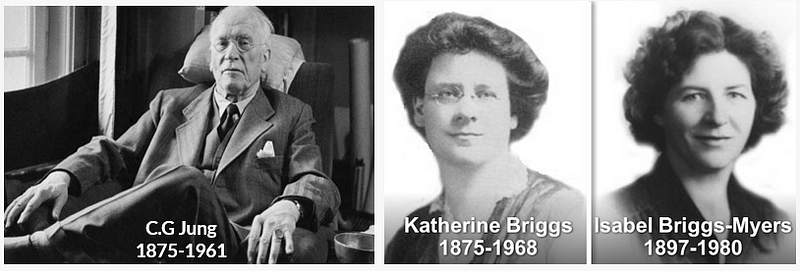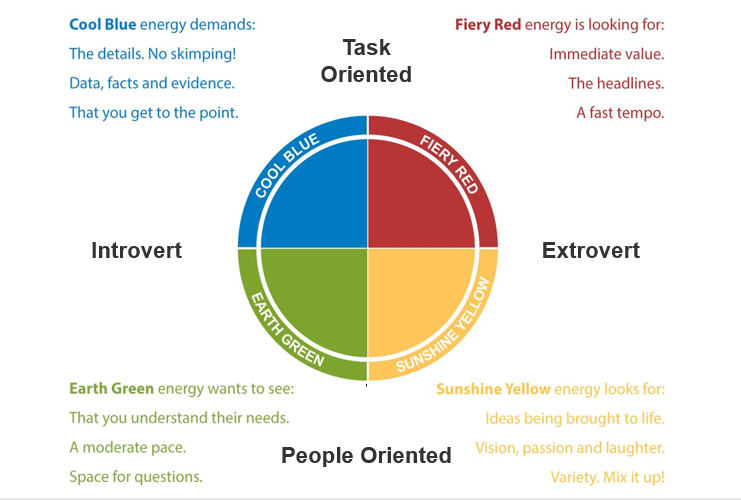If you are in sales and given a chance to have a “superpower” (or the ability to leverage the psychology of sales) to close more deals, what would that be?
Let me guess,
“Reading your prospect’s mind?”
“Maybe!” I am sure that knowing what they really want before asking lots of discovery questions would be a real privilege. However, neither you are an extremely powerful DC character nor a Superhero that can read minds 🙂
So how can we understand the psychology of our potential buyers and apply the science of psychology into our sales process?
A couple of magic tricks revealed, let’s discover together:
1- Mirror & Match
Mirror mirror tell me, what do my prospect’s body language (physiology), speech rate, volume, tonality, accent, or mannerisms show me?

Let’s take a real-life example from politics but not sales. In the picture above, is there anything that grabbed your attention at first glance?
Mirror & Match, is an interpersonal communication model about synchronization with the person in front of us by copying the behavior of the person in order to reflect in the same way.
According to research, it is a proven theory and creates a positive feeling on your counterpart when it is done in a respectful manner.
Why? Because when we imitate others, we subconsciously make them feel approved and feel closer to us. And in the sales business, your champion tends to work with salespeople they feel closer to. A customer wants to be appreciated and liked, he wants to feel like a big part of the inner cycle. At the end of the day, they don’t buy your product, they buy you.
In a sales meeting, mirroring your prospect means, imitating the each and every action of her; speaking with a similar accent, tone, speed as she speaks or sitting in a similar position, drinking water when they drink, and many more. Congratulations, now your prospect is in love with you!
2- Jung at heart: Power of colors
Yellow, red, blue, or green…What color is symbolizing your personality, or in other words, which color are you?
As human beings, we are always in communication with each other in our community. It is critical to deeply understand the behavior of the people surrounding us. For a better society, we need to strengthen our communication with them, not only in our business but also in our romantic and family relationships for a better living.
However, it is not easy because we don’t see the external world in exactly the same way. Our unique view is formed by our own individual perceptions and beliefs. If you can understand where these perceptions and beliefs come from, you can then begin to understand why other people see things differently.

- Don’t assume that others see the world the way you do; they don’t.
- Don’t jump to conclusions about anything until you hear and see other people’s points of view.
- Don’t think that because of your position, experience, and qualifications, your view is the only one that matters.
- When people see things differently from you, stop and try to see what they see rather than reject it out of hand.
What does your prospect see?
If you want to be innovative in your selling and tackle the barriers, you need to train yourself in order to see what they see by understanding how they are likely to act!
C.G. Jung, have clustered “personality types” into two dimensions:
- Task-orientation x People-orientation
- Introversion x Extroversion
Katherine Briggs ve Isabel Briggs (mother-daughter) turned Jung’s framework & “people sorting” instrument into practical use to find out why other people see things differently.

How can you apply this theory in your sales process?
If you’re in a sales meeting with a red personality a.k.a “natural leaders”, you need to be “fast, action-oriented and direct” with your pitch, while “reading the non-verbal signs of concern” and “building trust” is the key to conquer the heart of the green personalities who often “say yes but mean no”.
Yellow people ask for “involvement” so arrange your conversations by giving them extra time to make them talk, while blue people are digging each and every “data” in your slides, talk “ROI” and “be detail-oriented” to them!

It’s highly recommended to take a closer look at each color’s Dos & Don’ts’ before your conversation with your prospects so you can wear their color.
3- Reverse Psychology
Reverse psychology is a behavioral technique that is definitely not recommended to use day in and day out. But it can turn into a real lifesaver if you use it responsibly!
Let them sell themselves
According to Sandler’s Reverse Selling, it’s goal is convincing the prospect that they are pursuing the deal and in need of the product, rather than sales representatives ‘selling’ them.
The idea is to give your client reasons to defend (by changing the direction of the pressure a.k.a. negative pressure) what you’re selling – by mentioning that they seem to be more interested than you expected!
How to give that reason with ‘Stripping Line’?
It requires “doing exactly the opposite of what prospect is expecting from you in traditional sales”. Because by doing that the salesperson can better control and direct the selling process.
Sandler says that “when you’re fishing and you feel a bite, don’t set the hook right away (which is the expected move). Instead of “yanking” the rod (which is what most amateur fishermen would do), gently tipping it forward and creating “slack” in the line. Give the fish some line to run, let it take the bait and catch itself.”

When & How to Use This Weapon?
When your prospects do not reply to your emails or throw out the objections or want to ‘think on it’:
For example your prospect may have concerns regarding the pricing:
“The price is too high.” (Objection).
You may ask your prospect to elaborate more on her/his objection and then leverage negative reverse (surprise!) by withholding excitement, stop talking about the greatness of your product, service, and company at the first chance you get.
- “I completely understand. I don’t think you’re ready to make this investment.”
- “That’s a valid concern. I guess we’re done here.”
You are surprised, right? Allow your prospect to get excited, ask you about how your product or service will help him. And let your prospect tell you the solution he/she is looking for. If your product or service provides the solution your prospect is looking for, a sale will follow quickly.
But always have your plan B in case that fish don’t want to take the bait!
How to combine the tactic with questions?
Closing
The ‘scale of 1–10’ strategy with a negative reverse is a very good example:
- “From 1 to 10, where 1 is ‘I’m not interested in buying from you,’ and 10 is ‘Sign me up now,’ what number are you?”
Or as another closing question, instead of asking to find out what part of your solutions they liked most, do the reverse:
- “Among the solutions I’ve shown so far, What didn’t you like most?”
Thes questions make a perfect set up for the negative reverse because whatever their answer, you can use it to your advantage. You are going to listen their interest level from them and be pushing or pulling them in a particular direction.
Objection Handling
Instead of asking your prospect “Is everything clear?” or “Does that resolve your concern?” to make sure that you cleared all the concerns and objections, remember the psychology of sales and ask:
- What part of your concern do you feel is still left unaddressed?
The magic of the technique is lying here;
- “Having the control while making the prospect feel they have the control” which requires a certain level of sales proficiency and especially advanced closing experiences.
- Secondly, “change grabs attention” — giving the unexpected, non-stereotypical behavior (instead of giving overly enthusiastic sales pitches, and talking about the greatness of the product — all the time)
Keep the Rules, Play the Game!
- If you know all closing techniques by heart, backward & forward,
- If you know where to stop going in reverse or when to accelerate into a close,
- Not used day in and out, mix it up with questions,
- it is important to maintain a positive attitude and remain upbeat in selling situations,
- Requires patience & practice.
There’s definitely some risk involved in this response. Be cautious, be patient, and wait for the right situation which leads the prospect to defend and sell themselves on your product.
Dear closers, now you are one step closer to having that superpower by playing the psychology game in the right way! Be forbearing, try to discover the psychology of sales, and use these techniques responsibly. 🙂
Please share your comments & feedback regarding the psychology of sales.





No Comments